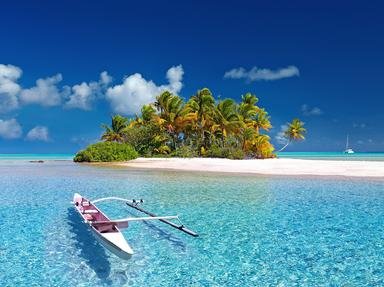Quiz Answer Key and Fun Facts
1. One of the most violent volcanic eruptions in history took place in the second millennium BC on the beautiful Greek island in the Aegean Sea that appears in the photo. What is this island's name?
2. As this gorgeous photo suggests, the island of São Miguel in the Azores bears the nickname of "green island". This archipelago is located between the Tropic of Cancer and the Equator.
3. Home to Mount Teide, one of the sixteen Decade Volcanoes, and a major tourist destination, Tenerife is the largest island in which archipelago in the Atlantic Ocean?
4. Cape Verde is a sovereign nation comprising ten volcanic islands. What is the somewhat appetizing name of the region of the North Atlantic Ocean of which the archipelago is part?
5. The volcanic islands of Saint Lucia, Saint Vincent, Dominica, Grenada and Martinique belong to what island group in the southern Caribbean Sea?
6. Located above a hotspot in the Earth's crust, the island of Réunion is part of the group known as Mascarene Island, but - unlike the rest of them - does not belong to the Republic of Mauritius. What European country claims this island as one of its overseas departments?
7. The island of Whaakari (known in English as White Island) made the news in 2019 for an unexpected, violent eruption that claimed the lives of 22 people. In what body of water on the coast of New Zealand's North Island does Whaakari lie?
8. Home to a number of dangerously active volcanoes, New Britain is the largest island in the Bismarck Archipelago, which is part of what sovereign country in the Pacific region?
9. One of the aptly-named Volcano Islands of Japan, Iwo Jima is well known for its role in the Pacific theatre of WWII. What is the name of the mountain, a still active volcanic vent, where an iconic photograph was taken in 1945?
10. Formerly known as the Catherine Archipelago, the Aleutian Islands are a chain of volcanic islands that mark the border between the Pacific Ocean to the south, and what body of water to the north?
Source: Author
LadyNym
This quiz was reviewed by FunTrivia editor
agony before going online.
Any errors found in FunTrivia content are routinely corrected through our feedback system.

